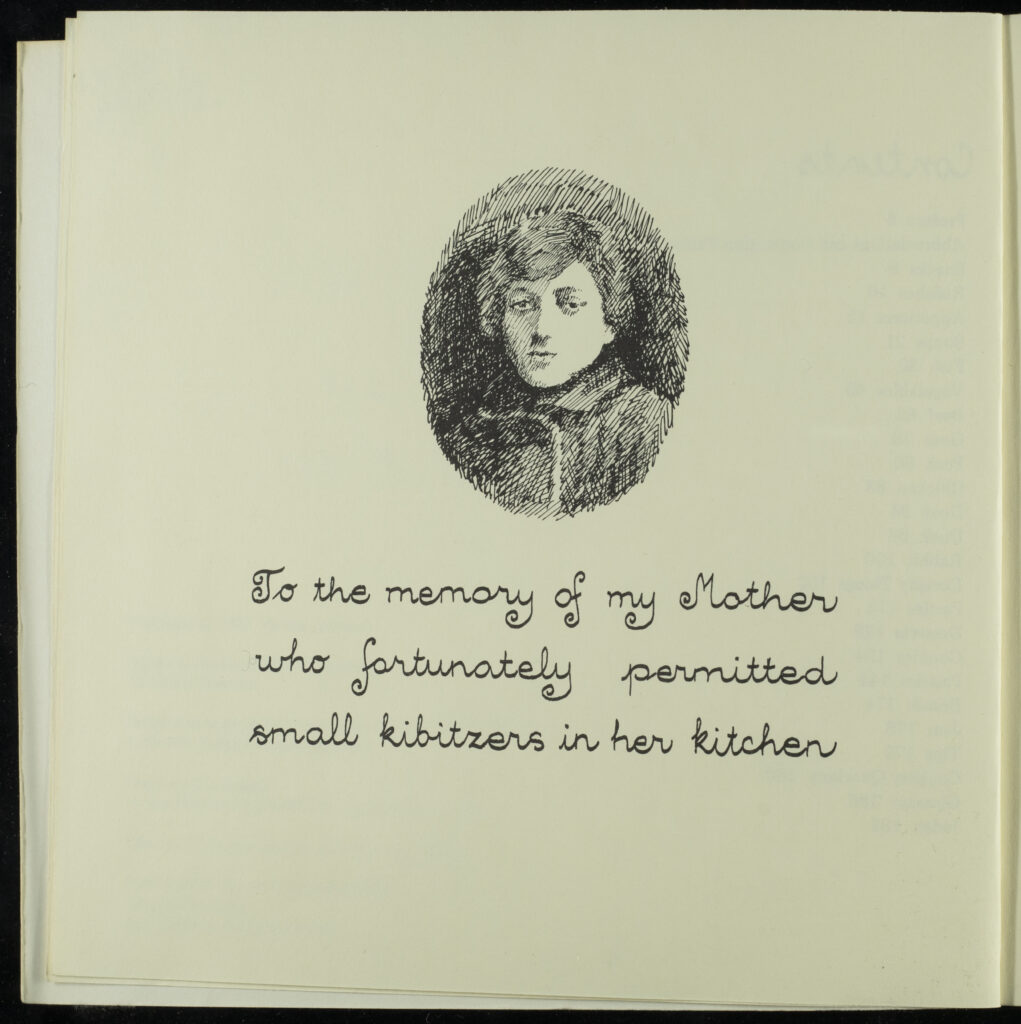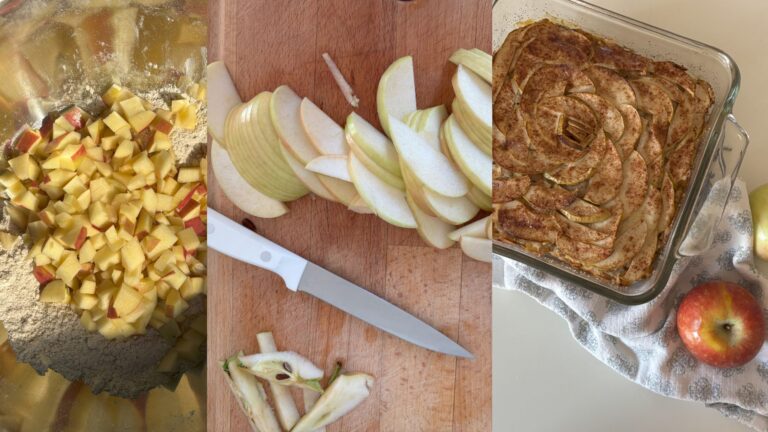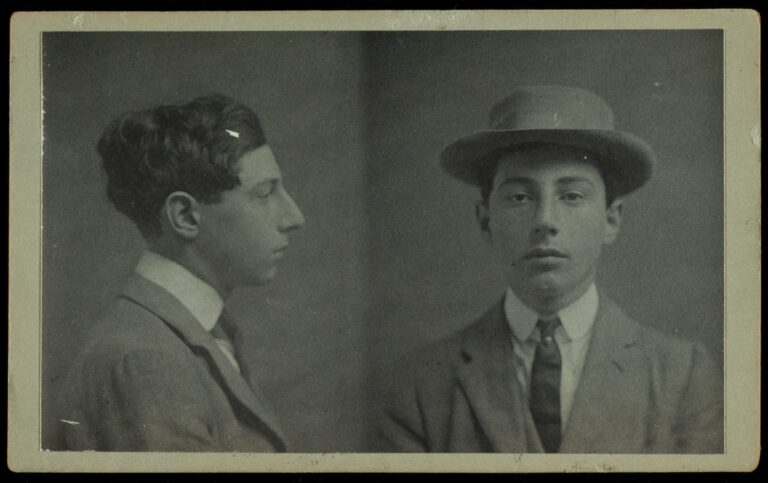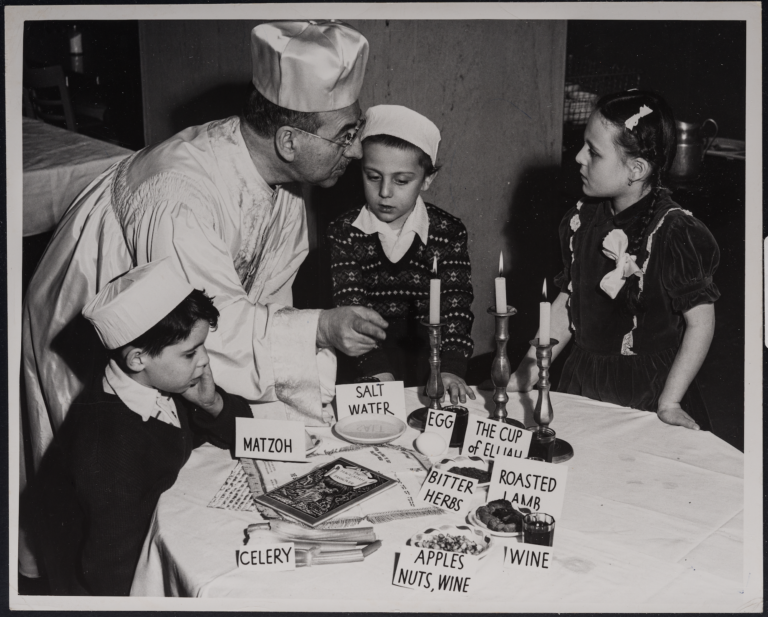
About 10 years ago, I was working on an exhibition that would eventually become Nourishing Tradition: Jewish Cookbooks and the Stories They Tell, a show that was presented in late 2016. The materials were to be drawn from multiple library and archival collections from various libraries, and there was a wonderful and exciting cache of material to be reviewed for the exhibition. The entire curation team (myself included), kept circling back to a cookbook called A Russian Jew Cooks in Peru, published in 1973 by Violeta Autumn; we were fascinated by the illustrations and stories sprinkled in with the recipes, and we ended up featuring the book in the show. But we were especially entranced by an illustration that we all affectionately called “the chickenfish”, which is an illustration that accompanied a recipe for what the author called “baylick fish, or gefilte fish with no fish”. We used a large facsimile of the drawing as one of the design motifs for the exhibition, and I still have the original print of this from the show in my office, where it hangs to this day, and always sparks questions from visitors.
One of the ways in which cookbooks, and items related to cookery, have fascinated me over the years is how they can serve as examples of creativity from the predominantly female authors, and this book is no exception. The recipes were hand-lettered, and all drawings that accompany the texts were done by the author herself. The whimsical design and overall presentation are somewhat reminiscent of The Moosewood Cookbook, which was originally published in 1973 by the Moosewood Collective, and other similar cookbooks published around the same time.
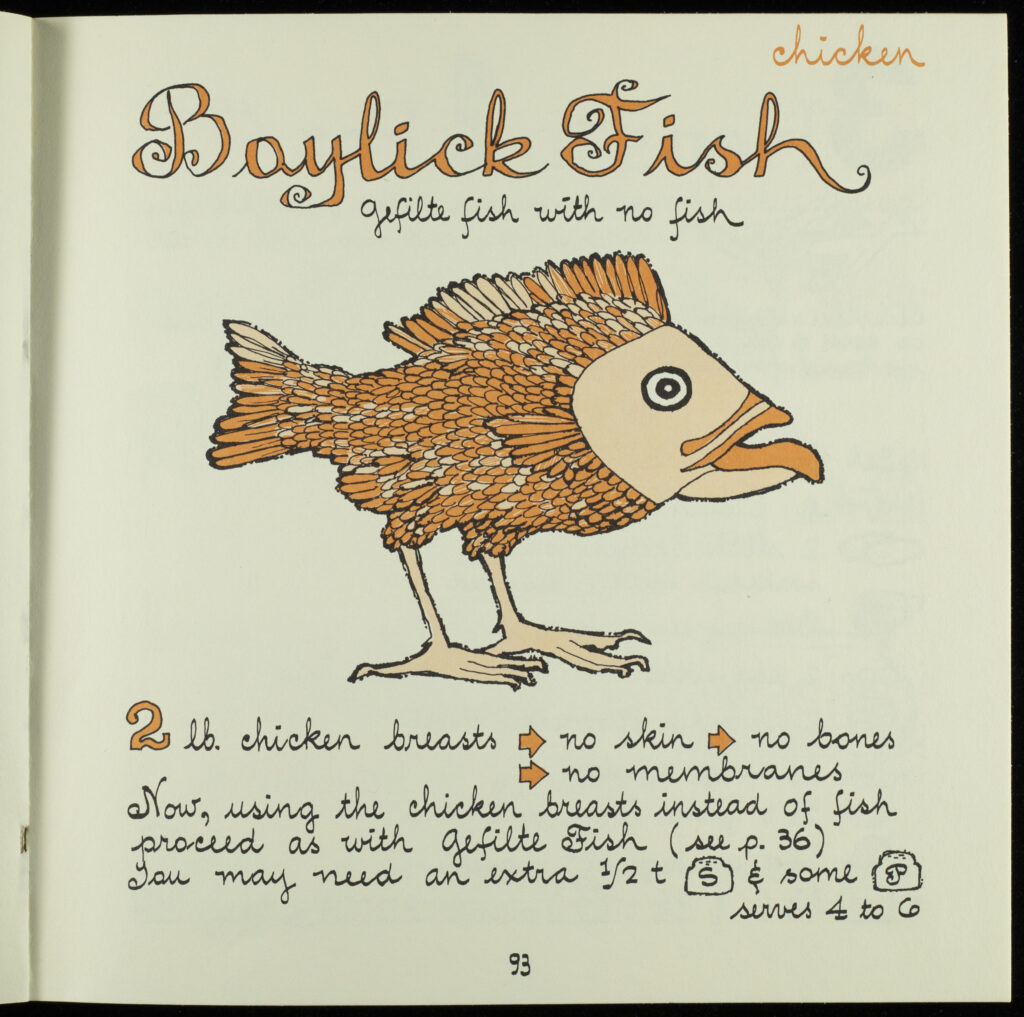
The author discusses her family and their immigration journey over the course of the book, and relates how many people of Russian or Eastern European ancestry migrated to South America during a specific period in the late 1920’s and early 1930’s. All recipes are her mothers, and represent what I would classify as an early version of fusion cuisine; these are traditionally Russian recipes often melded with Peruvian ingredients and elements, representing both the ancestral culture and their new, adopted community. These themes of adaptation driven by migration are very common in Jewish American cookbooks, as Jewish populations move to new and sometimes unfamiliar places and adapt their cherished cuisines to use the ingredients available (out of necessity), and also to experiment with local dishes that can evolve over time to become new favorites. As Ms. Autumn points out in her preface, “It wasn’t long before the shock of arrival wore off and they were speaking Spanish, eating ceviche and dancing the marinera with just as much gusto as their genial and accepting hosts”.
Her love and affection for her family is clear from the care taken with every page, and in that way it is similar to the “community” cookbooks produced by women’s organizations; the cookbooks provide recipes, but also insight into the families and communities who surround the authors themselves. And her dedication that opens the book will resonate with many of us; “For the memory of my mother, who fortunately permitted small kibitzers in her kitchen”. I personally am grateful that my own mother permitted little kibitzers in her kitchen, and I suspect that many of us have continued this tradition within our own kitchens and families.
